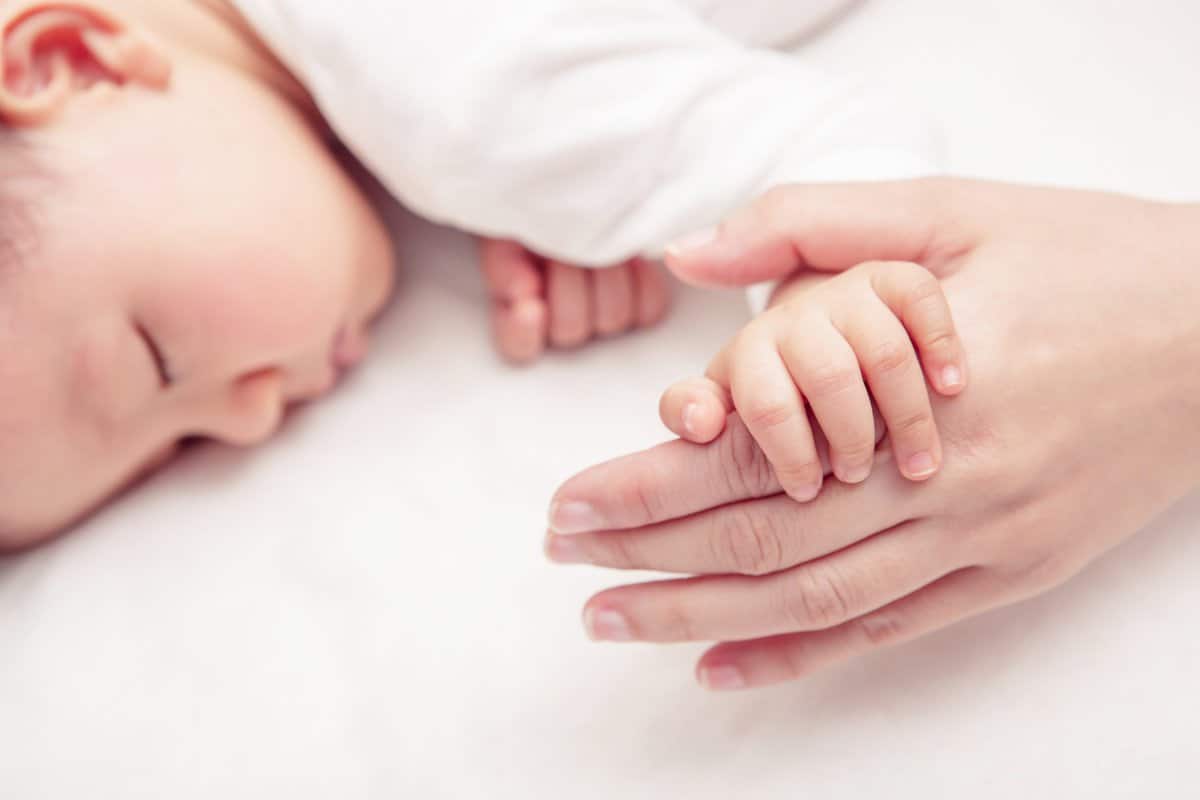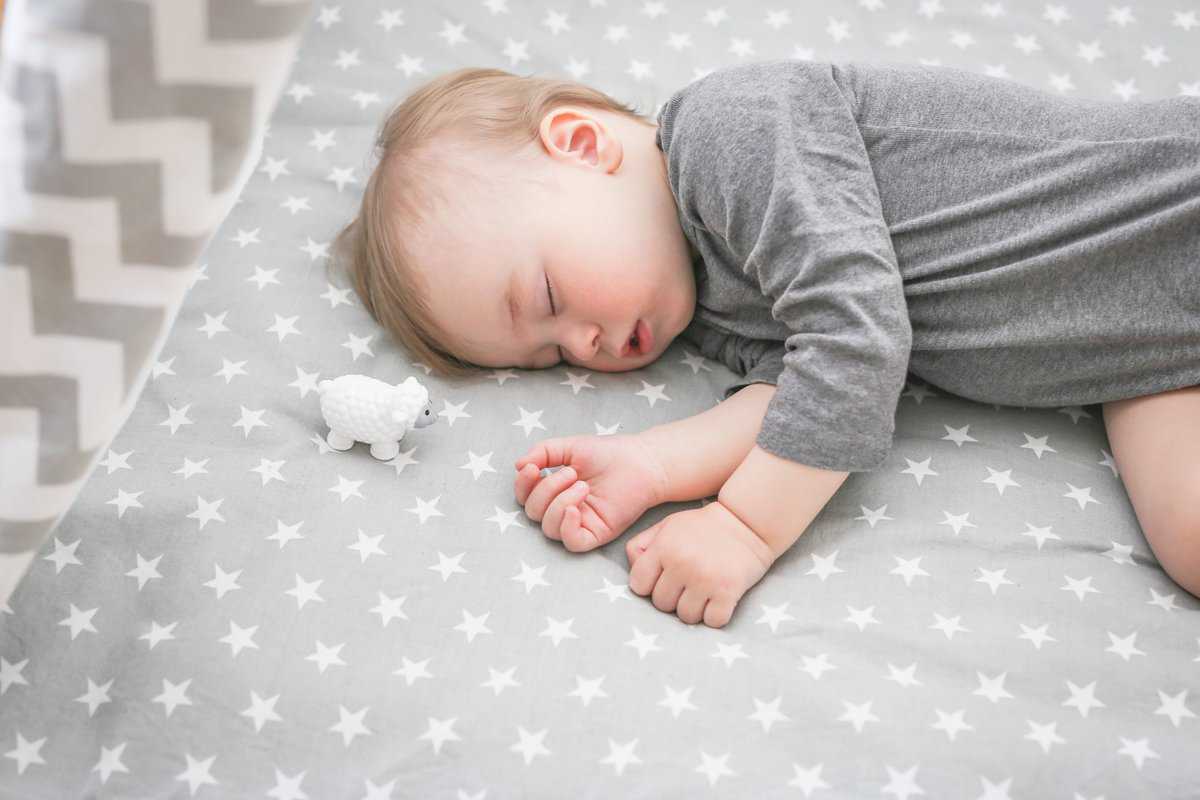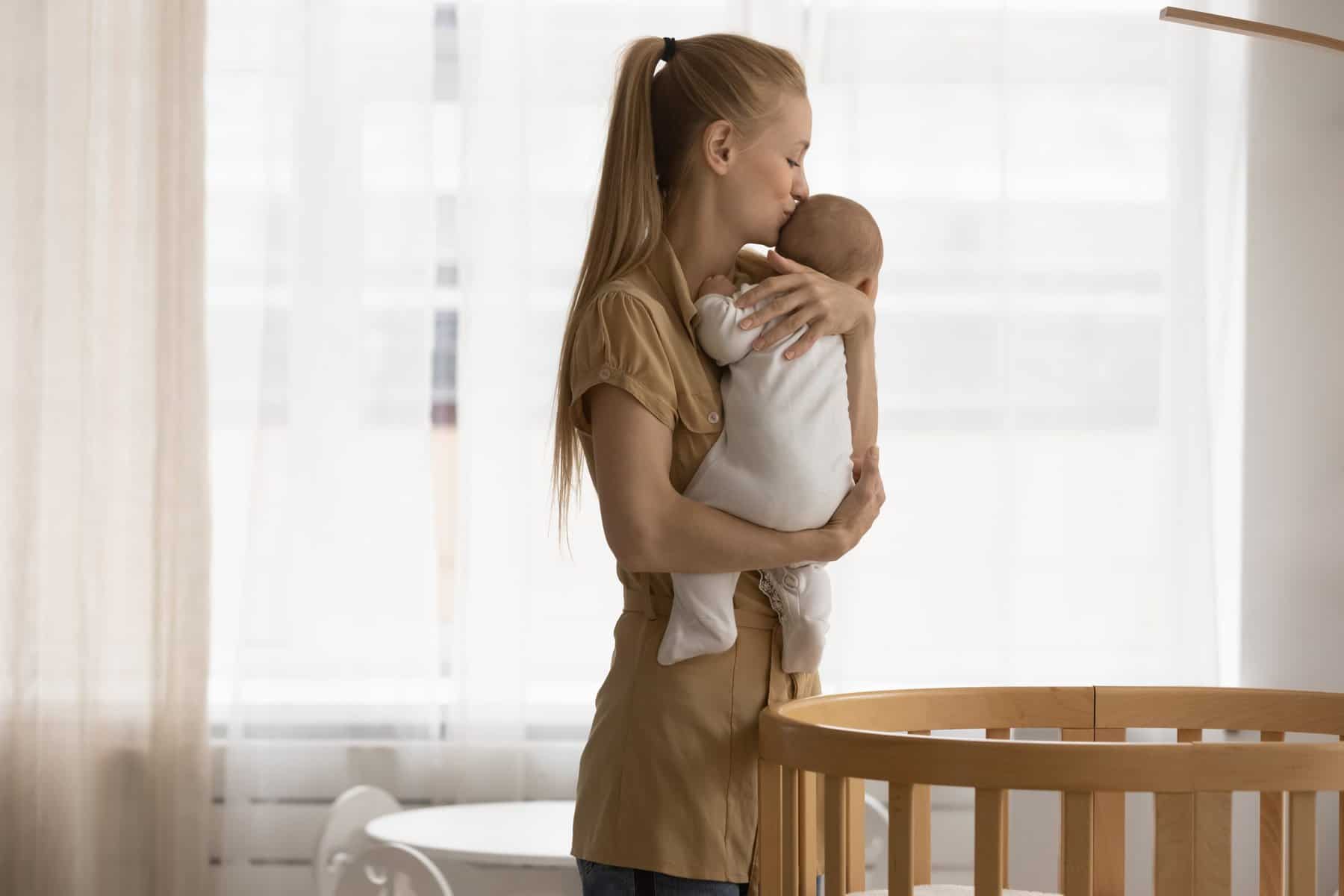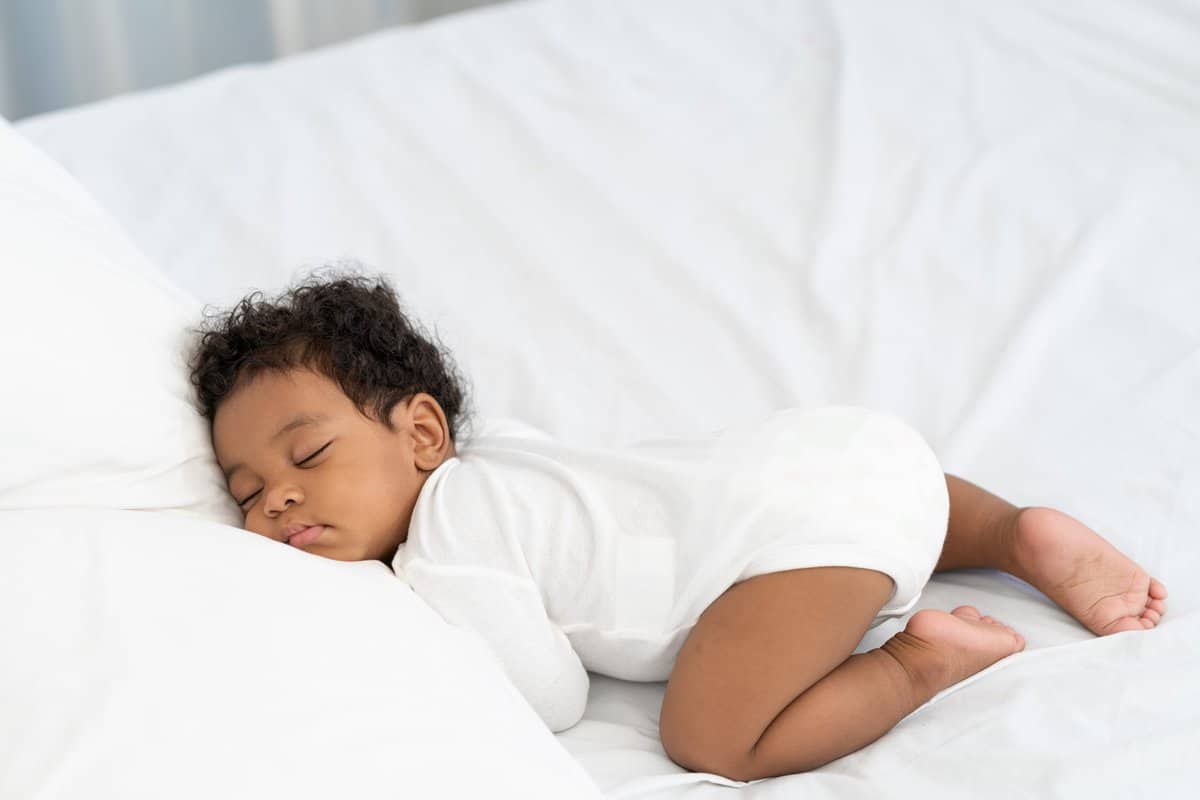Why do babies sleep with their butt in the air?
Over the months, babies try out various sleeping positions.
By the four-month milestone, they start to roll over and change positions. Earlier than that, however, parents have to make sure that their baby always sleeps on their back.
Understanding sleeping positions and what’s safe is crucial for parents.
One of the most common questions is why do babies sleep with their butt in the air.
We’re here to provide answers and help you create a safe sleep environment.
It may look a little funny, but the butt in the air position isn’t dangerous for your baby.
However, that doesn’t answer the question as to why do babies sleep with their butt in the air. What is it about this position that babies love? What are the risks and the benefits?
While there’s not a definite answer yet, we aim to explore different possible reasons and elaborate on the nuances of this position, as well as provide tips on safe sleep practices.
Understanding Baby Sleep Positions

Sleep is a crucial part of your baby’s development.
Well, sleep is important for anyone, really. But, it gets tricky with babies.
We understand that some parents might be scared due to the risk of sudden infant death syndrome (SIDS), the unexpected and unexplained death of a seemingly healthy newborn.
Therefore, understanding positions in which babies sleep and at what age these positions are considered safe is essential towards providing a safe environment for your little one.
The most common sleeping position for a newborn baby is on their back.
Pediatricians recommend and encourage this position because it’s the safest.
Before a baby learns how to roll over, they have to sleep on their back. Why? Because sleeping on their back significantly reduces the risk of SIDS by providing a clear airway.
Babies that sleep on their backs are at a notably lower risk of suffocation.
This is the safest sleep position for newborns, even after they learn to roll over.
Around 4 to 6 months of age – that’s when babies usually learn how to roll over, but it may vary on a case-to-case basis. That’s when the risk of SIDS is significantly reduced.
After the 4 to 6 month mark, your baby may safely assume different positions throughout the night. This includes a baby sleeping on their stomach, side, or still on their back.
The reason why it’s now considered safer is because babies have the ability to reposition themselves during sleep, at which point the risk of suffocation plummets significantly.
But, why do babies sleep with their butt in the air?
Maybe it’s a bit uncommon and certainly funny-looking, but it’s not a reason to worry.
After all, this position is safe if your baby has learned how to roll over both ways.
Basically, that implies rolling from belly to back and from back to belly.
If your baby has mastered this ability – then there’s no reason for concern.
However, creating a safe and comfortable space for your baby to sleep is so much more than that. First things first – let’s get to the bottom of the butt in the air position.
Why Do Babies Sleep With Their Butt in the Air?

The why is a bit tricky, because we don’t really know why babies love this position.
What we do know, however, is that it’s very common.
But, because it looks odd, parents worry. Is it dangerous? Technically, no. By this stage, your baby has probably mastered the art of rolling over, which makes the position safe.
One possible reason as to why do babies sleep with their butt in the air is because they find it comfortable. In this stance, babies stretch and flex their bodies, relieving tension.
In particular, the tension is relieved in their lower backs and legs.
When a baby sleeps like this, it could be due to the fact that it mimics the comfort and the safety of the womb, which in turn relaxes the baby and helps them sleep better.
In the womb, a baby is curled up with their legs bent and their arms close to their body.
Sleeping with their butt in the air may provide security that other positions simply lack.
That sense of protection, therefore, makes them feel safe.
Besides, it’s what your little one has gotten used to. Maybe it’s muscle memory at work. They spent nine months curled up, and are now thrust into a weird, unfamiliar world.
It likely won’t be the only amusing position your baby takes up.
Besides comfort and resemblance to the womb, one potential reason as to why do babies sleep with their butt in the air could be due to the fact that your baby is learning to crawl.
Therefore, if your baby is around 9 months old, it’s possible that this position may imply a developmental milestone in the sense that your little one is mastering the art of crawling.
Babies crawl in many ways, sometimes asymmetrically.
They develop this ability in different ways.
So, it’s not out of the question that it may be related to developmental skills.
After all, a baby sleeping with their butt in the air is actively engaging certain muscle groups, especially back and neck muscles, developing strength, coordination and balance.
You don’t need to correct this position if your baby knows how to roll over.
However, if your baby lacks the physical know-how of rolling over, especially if your little one is under 6 months of age – then you need to place your baby on their back.
Other than that, this position is perfectly normal, and likely not the only strange sleeping posture that you will witness. During this time, babies tend to change positions frequently.
Knowing what’s safe and what’s not is important for parents that worry too much.
But, how do you help your baby sleep safely during this stage?
Tips for Safe Sleep Practices

Now that your baby is exploring different sleeping positions, developing their motor skills and learning to move around, you need to focus on maintaining a safe sleep environment.
Whether your little one is sleeping in a crib or some other alternative, the same rules apply. We have taken the responsibility to organize must-know safety tips for parents.
Here’s what you need to know:
• Use a firm and flat mattress
You might be wondering why do babies sleep with their butt in the air, but regardless of the sleeping position in effect – the mattress your baby sleeps on has to be firm and flat.
Why? Well, it significantly reduces the risk of SIDS.
Soft mattresses are to be avoided at all costs.
As your baby grows, you might be wondering how much weight can a crib hold.
The mattress has to fit tightly against the sides of the crib.
Make sure to check for any gaps, because they pose a risk of entrapment.
Other than that, don’t forget to keep the surface of the mattress clean.
• No loose or soft objects in the sleep area
Yes, that includes toys, especially. During the first 4 to 6 months, an infant is at a higher risk of suffocation. However, by keeping the area clear of hazards, you lower the risks.
The risk of suffocation is increased by pillows, blankets, toys and other soft items.
An infant is unable to move their head away. Therefore, a loose blanket may cover their face and restrict their breathing. That’s why you have to avoid placing items in the crib.
Even after the 6 month milestone when your baby has learned how to roll over, it’s generally advised to keep the baby’s sleep area free in order to maximize safety.
• Dress your baby appropriately
Babies have a hard time regulating body temperature.
They are more sensitive to heat and cold. As such, you have to dress your baby appropriately for sleep in order to help them maintain optimal body temperature.
Consider the room temperature first and dress your little one appropriately.
Mind the risk of overheating. Don’t overdress your newborn. Overheating increases the risk of other sleep-related issues, such as difficulty falling asleep and night wakings.
Just the same, not enough layers can make them cold and uncomfortable.
If you’re uncertain, observe your baby’s cues. Are they having difficulty falling asleep? Check the room temperature and make sure that you’re keeping your baby comfortable.
• Place your baby on their back, if needed
Placing a newborn on their back significantly lowers the risk of SIDS.
Practice this sleeping position until your baby learns how to roll over, which usually happens around 4 to 6 months of age. After that, they can assume different positions.
If you’re unsure as to what the best position for your baby might be, consult with your pediatrician. They can help you by providing insight and valuable strategies for safe sleep.
If you’re here because you’re wondering why do babies sleep with their butt in the air, you likely don’t have to place your baby on their back since they know how to roll over.
• If possible, practice breastfeeding
Breastfeeding has many benefits that promote healthy sleep in young babies.
From reducing the risk of SIDS to protecting your baby against illnesses and helping develop the immune system – breastfeeding is linked to numerous positive effects.
One of those benefits is sleep improvement.
If your little one is formula-fed, it’s still important to follow all safety tips.
• Avoid co-sleeping
Sharing the same bed might seem like a good idea at first.
However, pediatricians strongly discourage this practice due to safety concerns.
You may think that co-sleeping allows you to monitor your baby closely, but when you drift to sleep next to your baby, the risk of suffocation actually increases substantially.
On the other hand, sharing a room with the baby is much safer, and recommended.
Should You Put Your Baby to Sleep This Way?

What if your baby isn’t sleeping with their bum in the air?
Maybe they did but quickly outgrew it. Thinking of encouraging it as you move forward?
Here’s what you need to know.
Babies fall asleep in the most adorable sleeping positions. Some of these positions, such as the bum in the air or frog position, are often wrongly misinterpreted as uncomfortable.
Now that you have an idea as to why do babies sleep on their knees, it’s important to know whether or not you should encourage and support this sleeping position in the future.
We go back to that initial point.
If your baby is less than 6 months old, prioritize putting them to sleep on their back.
But, what if your baby is older? What if they have fine motor skills and have fully developed the ability to roll over? Does that make sleeping in different positions safer?
Yes, certainly, but the butt in the air position shouldn’t be directly encouraged.
If your baby sleeps fine on their back, there’s no reason to change anything.
Just make sure that your baby’s safe and comfortable, no matter the position.
Should You Correct the Frog Position?

Understanding why do babies sleep with their butt in the air is crucial, but should you correct the position by waking up your little one and positioning them differently?
It’s important to know when you should and shouldn’t wake up your baby.
However, as a general rule, regardless of how babies like to sleep, always place them on their backs, no matter their age. If they roll over on their own – that’s perfectly fine.
Avoid placing your child in any other position when it’s time for bed.
Especially if your newborn is less than 6 months of age, you want to make sure that they are always positioned correctly, meaning that you put them down to sleep on their back.
So, you don’t have to keep flipping your baby.
At this stage, your baby is entirely capable of self-correction.
Their motor skills have improved. Because of that, they’re eager to move around.
However, as a responsible parent, it’s still your main priority to ensure a safe and comfortable sleeping environment, as explained in our selection of must-know tips.
Continue practicing safe sleep habits, but don’t worry about correcting your baby’s funny-looking sleeping pose. By now you know why do babies sleep with their butt in the air.
Since there’s no need for correction, then there’s no need for worry, either.
What Happens When Your Baby Turns 1?

From the 6-month mark, babies start to unlock key physical milestones.
By month 9, they learn to creep and crawl.
So, how does this impact their sleeping habits? What sort of sleeping positions can you expect after your baby turns 1, or before? Even then, why do babies sleep on their knees?
After the 12th month, your little angel will be physically developed in order to be able to roll over, crawl, kick, flip and so much more. As such, their sleeping positions change.
Even though most babies develop the ability to roll over much sooner, somewhere around the 6-month mark, some experts claim to prioritize back-sleeping until your baby turns 1.
After that, you don’t have to worry about your baby finding a comfortable position.
Even if they are uncomfortable, they have the necessary strength to change positions without your assistance. That takes care of your worry, but you still have to be observant.
You still have to make sure that your baby has a safe space for sleep.
After a year, babies are less likely to find themselves trapped in a dangerous position.
That means that basically all sleeping positions, no matter how funny or odd-looking they are, become safe. Still, the risks significantly drop as soon as your baby learns to roll over.
That means that the frog position is, in fact, considered much safer after the 6th month.
When you learn why do babies sleep with their butt in the air, you can focus on the benefits of this strange posture instead of worrying about potential risks and dangers.
Tips for Improving Your Baby’s Sleep Routine

Having familiarized yourself with the potential reasons as to why do babies sleep with their butt in the air, you can focus elsewhere – such as developing a nighttime routine.
Getting a good night’s sleep is important for both the baby and the parents.
By incorporating a structured nighttime routine focused on relaxation, it becomes easier for the baby not only to fall asleep, but to enjoy uninterrupted sleep throughout the night.
Here’s a few tips to help you get started on the right foot:
• Bath time
Before going to bed, help your little one calm down with bath time.
Mind the temperature of the water. Your baby’s body is sensitive to heat and cold. The water temperature should be warm but not too hot. Test the water before the bath.
Make sure to choose a good time and to stick to it.
Routines function on predictability and consistency.
Most babies like having a soothing bath before sleep. If not, many other calming activities may help your bundle of joy relax before calling it a night and going to bed.
Have everything you need at the ready, be gentle and keep the bath short.
• Storytime
Reading to your baby, regardless of age, is a relaxing and educative activity.
Just make sure to use age-appropriate books.
Reading complex books may sound like a good idea to bore your little one to sleep, but reading time should simultaneously be relaxing and educating. Pick your books smartly.
As you read, do so in a calm and gentle tone. Mind your voice, the idea being that you want your voice to sound just like a lullaby, gently lulling your tired baby to slumber.
Even if your baby doesn’t seem interested, be persistent.
Sometimes all it takes is a little bit of patience.
• Massage
A gentle massage before bedtime calms and relaxes your baby.
Bear in mind that messages aren’t just about touch. You also have to create a peaceful environment. For example, you can give your baby a massage in a dimly lit bedroom.
If you’re going to use oils or lotions, make sure that they’re baby-safe.
Always prioritize your baby’s safety, especially since their skin is so sensitive.
Start from their feet and work your way up. Use gentle movements to massage your baby’s body. A calm and measured touch helps babies relax and settle into a good night’s sleep.
The benefits of massages are many. They even include a sense of closeness.
As you massage your little one while they drift to sleep, you bond with them.
However, keep in mind that not all babies respond positively to massages, especially in certain areas. So, be patient and slow at first until you learn your baby’s likes and dislikes.
• Cuddle time
An effective way to lull your baby to sleep is to cuddle before bed.
Don’t overstimulate your baby by playing with them. Instead, make sure to talk softly, to hold them close to your chest, to make eye contact, to smile and to rock your baby gently.
You can even wrap the two of you in a soft blanket.
However, ensure not to fall asleep during cuddle time, because that could endanger their safety. Only do cuddle time when you’re sure there’s no way you’ll doze off.
Just like massages, cuddle time is a great way to bond with your child.
• What not to do
Knowing what not to do is just as important as knowing what helps.
For example, you want to avoid exposing your baby to screens before bed.
In fact, it’s something that you ought to fix for yourself if you haven’t done so already.
From TVs to smartphones, these devices disrupt our natural sleep rhythms. It’s a problem for adults, never mind a child that may have difficulty sleeping normally anyway.
Other than that, you want to exclude engaging activities before bedtime.
Instead, replace them with the suggestions we provided above.
Another thing to consider is your baby’s feeding times, especially if you’re having trouble putting them to sleep. Overfeeding before bedtime can lead to discomfort and alertness.
You also want to ensure a calm and quiet sleeping environment.
Loud noises are certain to disrupt your baby’s sleep.
When it’s time for bed – it’s time for bed—no unnecessary noises in the house.
Finally, it helps a lot to keep your baby’s stress levels in mind. Babies respond to stress, and they respond negatively. You need to avoid exposing them to stressful situations.
Basically, anything that upsets your baby falls under that category.
So, mind the dos and don’ts, and you’re good to go.
In Conclusion

The question as to why do babies sleep on their knees with their butts in the air is one that many parents ask themselves because it’s actually a rather common predicament.
Now that you know that it’s normal and safe if your baby knows how to roll over, focus on improving your baby’s sleeping habits and cultivating optimal physical development.
As of writing this article, we don’t really know why babies do it.
Maybe it’s just comfy. Maybe it reminds them of the womb.
It’s amusing to us because it looks a little funny, but how long will it last?
Hard to say. It depends. It varies from baby to baby. Some babies never adopt the butt in the air position, while others grow out of it quickly. You will simply have to wait and see.
With age and growth, expect your little one to change their positions often.
Having learned how to roll over, they will be eager to test the limitations of their tiny body and, in doing so, develop strength, coordination, balance and improve motor skills.
As a responsible parent, do well to follow safe sleep practices. These vary from using a firm and flat mattress to keeping your baby’s sleeping area free of toys and soft objects.
All things considered, don’t be concerned if your baby has their butt in the air.
Consider snapping a cute photo, instead.

Mother of three and a primary school teacher. I’ve always loved being around children and helping them, so I chose my path as a teacher. It is sometimes hectic with three children, but I am 100 percent into it and wouldn’t change it for anything in the world.


